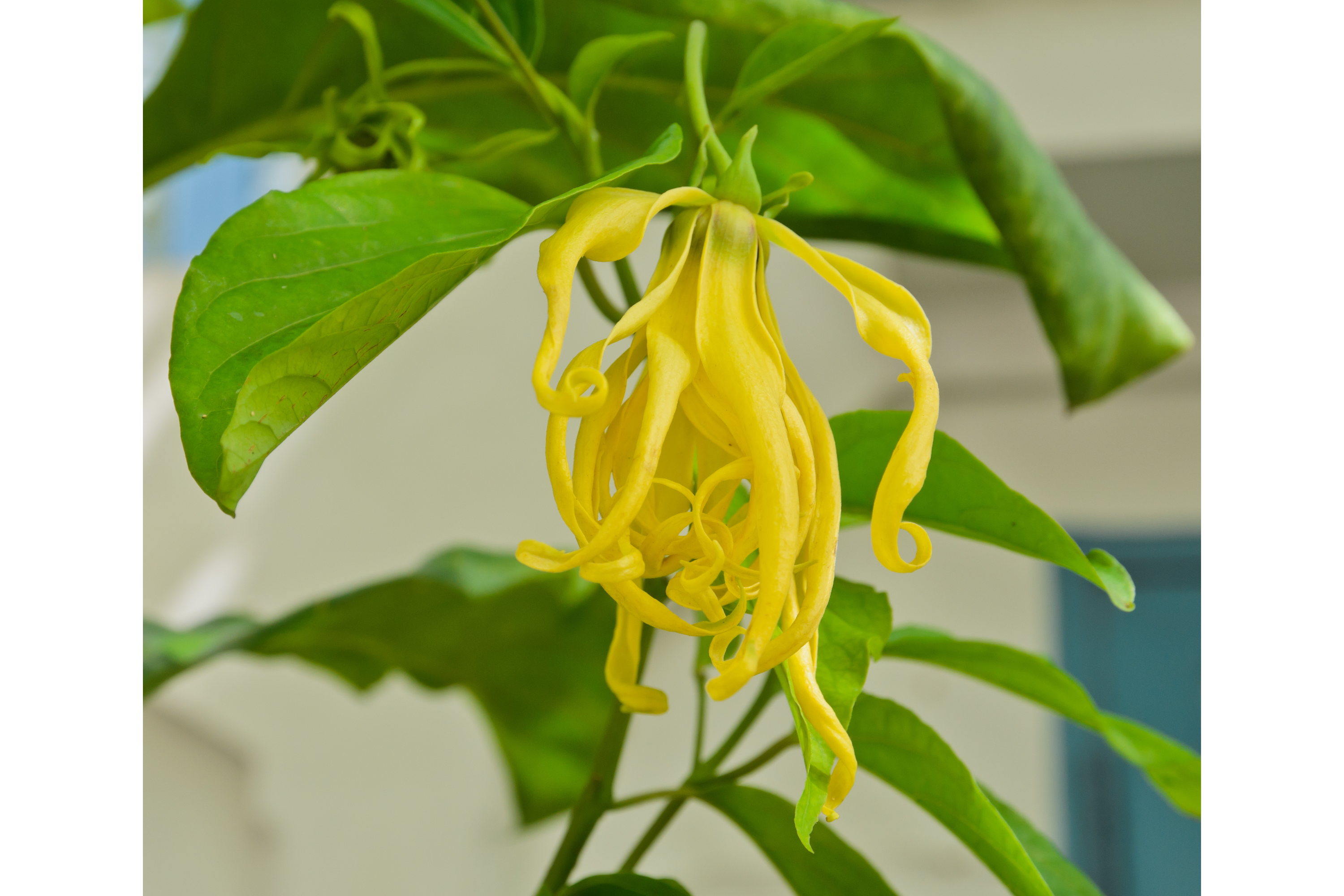Ylang-Ylang
(Cananga odorata)

Description
Cananga odorata, known as ylang-ylang or cananga tree, is a tropical tree that is native to the Philippines, Malaysia, Indonesia, New Guinea, the Solomon Islands, and Queensland, Australia. It is also native to parts of Thailand and Vietnam. It is valued for the essential oils extracted from its flowers (also called "ylang-ylang"), which has a strong floral fragrance. Ylang-ylang is one of the most extensively used natural materials in the perfume industry, earning it the name "Queen of Perfumes". The ylang-ylang vine (Artabotrys odoratissimus) and climbing ylang-ylang (Artabotrys hexapetalus) are woody, evergreen climbing plants in the same family. Artabotrys odoratissimus is also a source of perfume. The name ylang-ylang is the Spanish spelling of the Tagalog term for the tree, ilang-ilang - a reduplicative form of the word ilang, meaning "wilderness", alluding to the tree's natural habitat. A common mistranslation is "flower of flowers". The tree is also called the fragrant cananga, Macassar-oil plant, or perfume tree. Its traditional Polynesian names include Mataʻoi (Cook Islands), Mohokoi (Tonga), Mosoʻoi (Samoa), Motoʻoi (Hawaii), and Mokosoi, Mokasoi or Mokohoi (Fiji). Cananga odorata is a fast-growing tree of the custard apple family Annonaceae. Its growth exceeds 5 m (16 ft) per year, and it attains an average height of 12 m (39 ft) in an ideal climate. The compound evergreen leaves are pinnate, smooth and glossy, and 13–21 cm (5–8.5 in) long. Leaflets are oval, pointed and with wavy margins. The flower is drooping, long-stalked, with six narrow, greenish-yellow (rarely pink) petals, rather like a sea star in appearance, and yields a highly fragrant essential oil. Its pollen is shed as permanent tetrads. The plant is native to the Malesian ecoregion, from parts of Mainland Southeast Asia (Thailand and Vietnam), to Maritime Southeast Asia (the Philippines, Malaysia, Indonesia), Papua New Guinea, the Solomon Islands, and to Queensland, Australia. It has been introduced to other tropical regions in the Pacific Islands, South Asia, Africa, and the Americas. It is commonly grown in Madagascar, Polynesia, Melanesia, Micronesia, and the Comoros Islands. It grows in full or partial sun, and prefers the acidic soils of its native rainforest habitat. Ylang-ylang has been cultivated in temperate climates under conservatory conditions. In Madagascar, it is grown in plantations with Hewittia malabarica (L.) Suresh as a groundcover plant.
Taxonomic tree:







